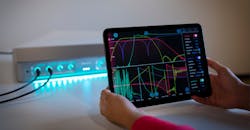Taking high-precision measurements, such as those for molecular and atomic applications, typically requires laser platforms outfitted with noise-canceling capabilities. This maintains a level of stability during measurement testing; however, gaining that stable laser lock requires an optimal feedback controller to measure the transfer function of a control loop. It also requires a disturbance rejection or the response as a function of frequency that the disturbance would experience when coupled to a laser and detected after traveling through the system.
The challenge in measuring the closed-loop disturbance rejection is injecting noise without interrupting signal feedback. To mitigate that issue and more, engineers are turning to FPGAs (Field Programmable Gate Arrays), which can dynamically switch between instruments and link multiple instruments together to create fully contained test systems. These configurable processors allow users to lock the laser to the cavity, inject the disturbance, and simultaneously measure the open-loop, closed-loop, and disturbance transfer functions.

